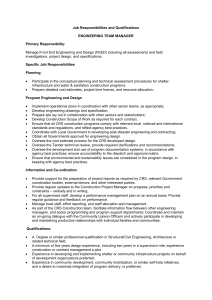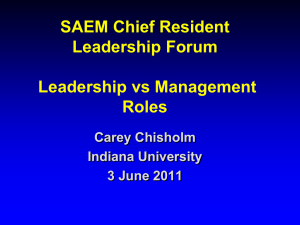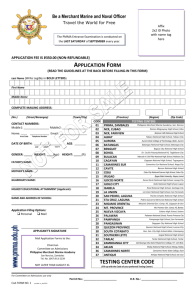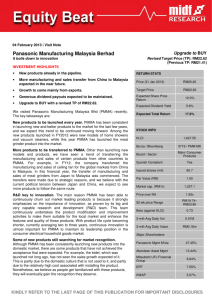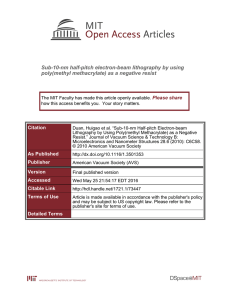Abstract in Microsoft Word® format 20806 bytes
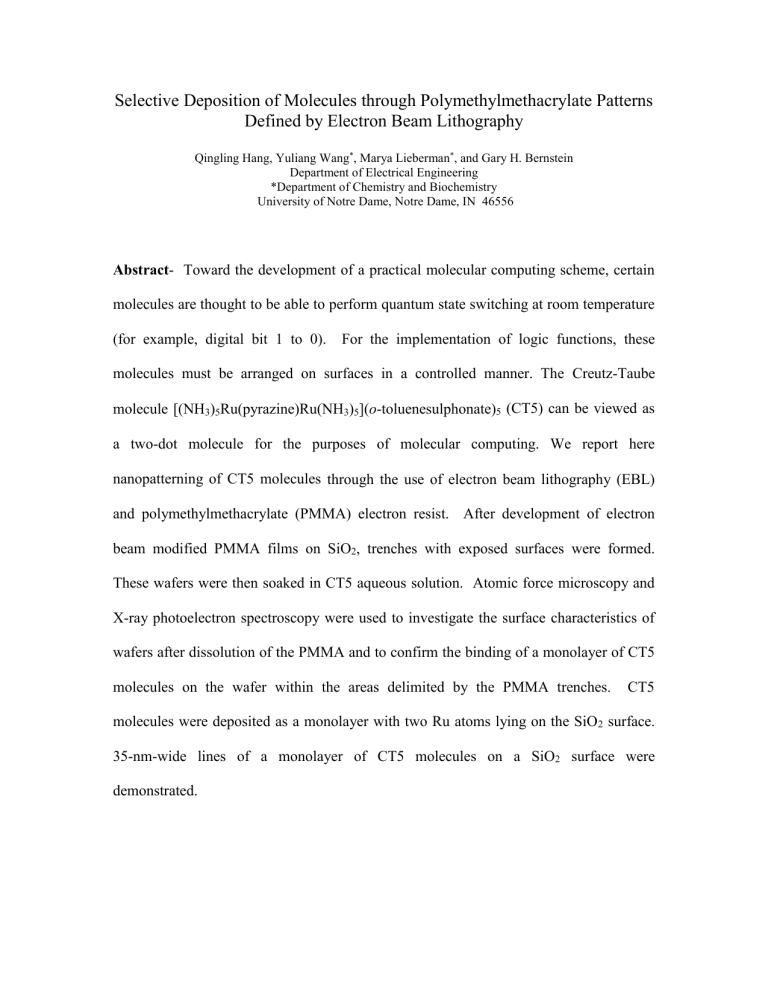
Selective Deposition of Molecules through Polymethylmethacrylate Patterns
Defined by Electron Beam Lithography
Qingling Hang, Yuliang Wang * , Marya Lieberman * , and Gary H. Bernstein
Department of Electrical Engineering
*Department of Chemistry and Biochemistry
University of Notre Dame, Notre Dame, IN 46556
Abstract - Toward the development of a practical molecular computing scheme, certain molecules are thought to be able to perform quantum state switching at room temperature
(for example, digital bit 1 to 0). For the implementation of logic functions, these molecules must be arranged on surfaces in a controlled manner. The Creutz-Taube molecule [(NH
3
)
5
Ru(pyrazine)Ru(NH
3
)
5
]( o -toluenesulphonate)
5
(CT5) can be viewed as a two-dot molecule for the purposes of molecular computing. We report here nanopatterning of CT5 molecules through the use of electron beam lithography (EBL) and polymethylmethacrylate (PMMA) electron resist. After development of electron beam modified PMMA films on SiO
2
, trenches with exposed surfaces were formed.
These wafers were then soaked in CT5 aqueous solution. Atomic force microscopy and
X-ray photoelectron spectroscopy were used to investigate the surface characteristics of wafers after dissolution of the PMMA and to confirm the binding of a monolayer of CT5 molecules on the wafer within the areas delimited by the PMMA trenches. CT5 molecules were deposited as a monolayer with two Ru atoms lying on the SiO
2
surface.
35-nm-wide lines of a monolayer of CT5 molecules on a SiO
2
surface were demonstrated.
